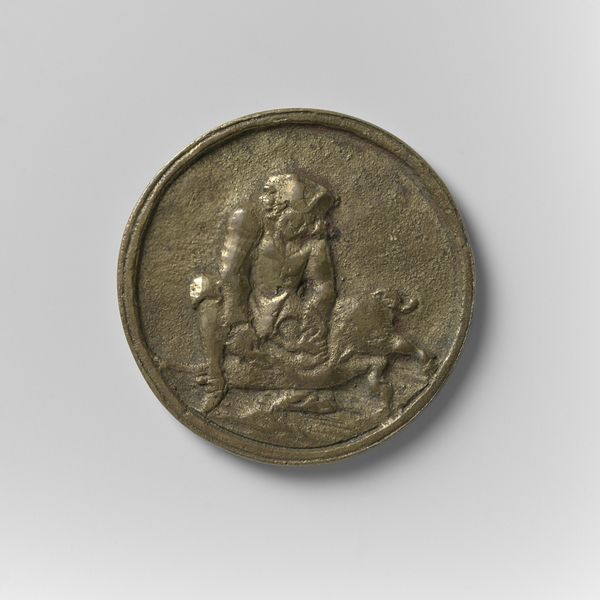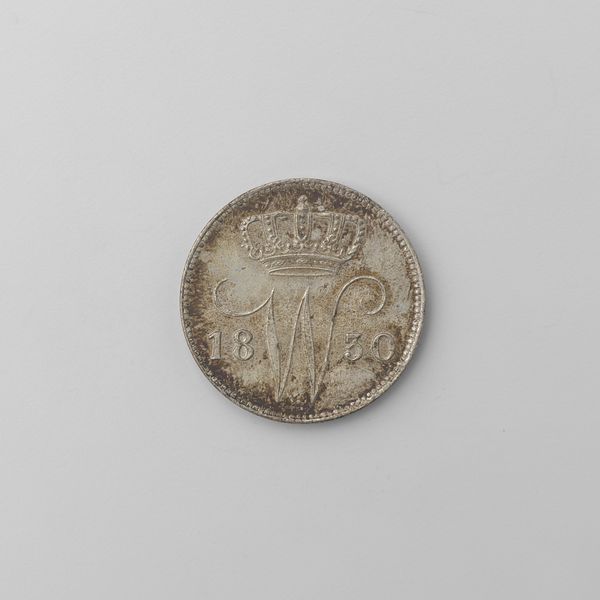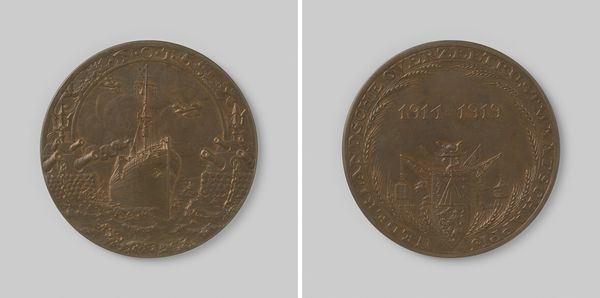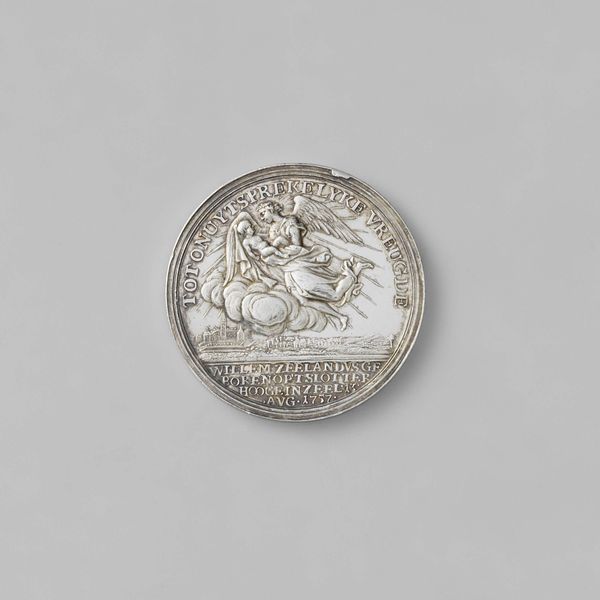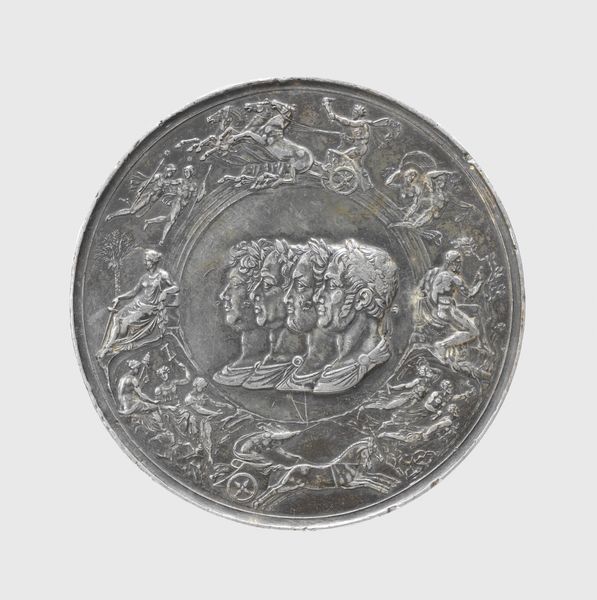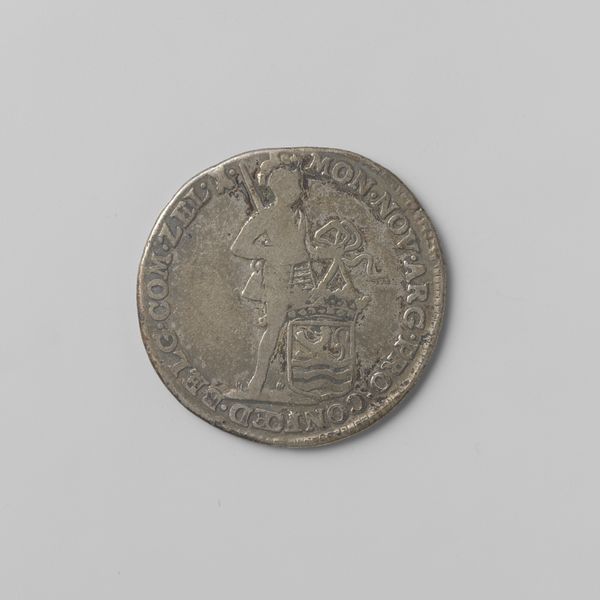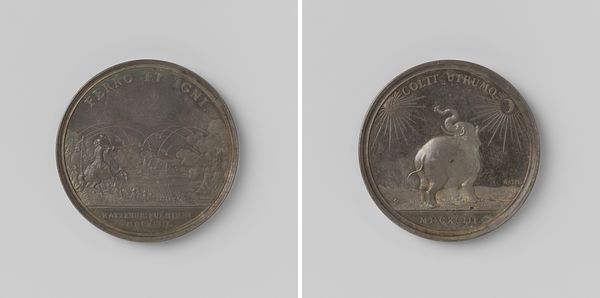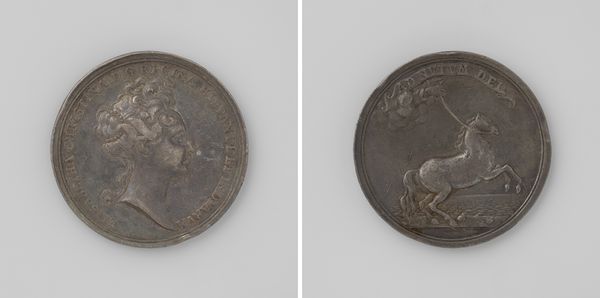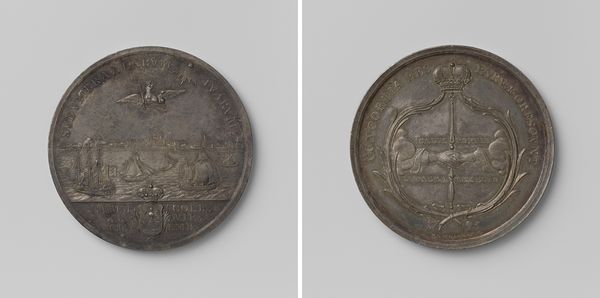
print, metal
#
portrait
#
narrative-art
#
baroque
# print
#
metal
#
history-painting
Dimensions: diameter 4 cm, weight gr
Copyright: Rijks Museum: Open Domain
Curator: The first thing I notice is the texture; it feels like I could scratch the surface right off, leaving just this silvery essence behind. Editor: Indeed! We're looking at a piece called "Clara in Neurenberg," dating back to 1748. It’s a print on metal, made by Peter Paul Werner. Curator: Clara? She's a rhino, right? Poor thing looks a bit bewildered by the whole Nuremberg scene. Imagine lugging all that armor... Editor: It is quite an intriguing piece! It speaks volumes about early encounters with the exotic, and how they were framed, perceived. You see Clara rendered with these armor-like plates… This portrayal is interesting considering Europe’s imperial gaze and its implications for both humans and non-human animals. Curator: Oh, definitely. There's this mix of scientific observation and total fairytale going on. Those tiny trees and that sunny-cloudy combo above… I’m amused and heartbroken all at once. Editor: Consider also that medals like these were circulated widely, fixing Clara’s image within a specific European understanding, normalizing a colonial point of view. It’s not just an innocent portrait. Curator: Not innocent at all, is it? Though, there's still something almost endearing in the clumsy execution. It shows the gap between reality and imagination. Like they saw her, but only halfway understood her. It makes you wonder what other strange beasts we are still trying to understand… or perhaps, misunderstand. Editor: That's beautifully put. It reminds us that even historical records are always filtered through cultural lenses, requiring critical engagement. Looking at "Clara in Neurenberg" today offers valuable perspective. Curator: Right? It makes you think twice about what you're seeing – and what you *think* you see. Editor: Precisely! A medal depicting so much more.
Comments
No comments
Be the first to comment and join the conversation on the ultimate creative platform.
